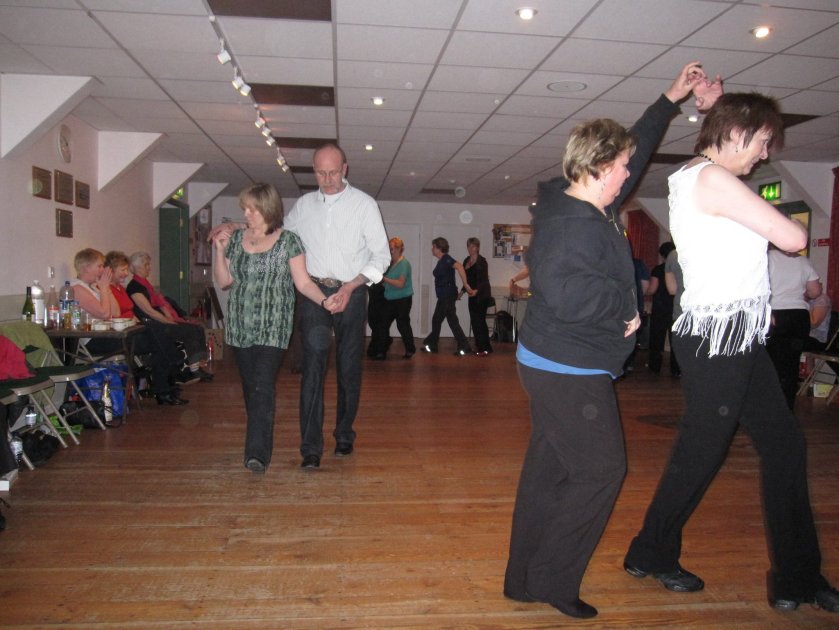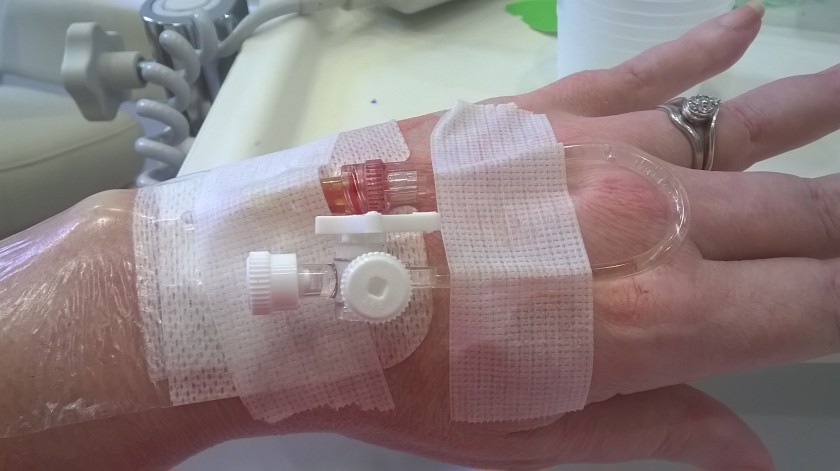![IMG-20190329-WA0000[5240]](https://guineapigstale.files.wordpress.com/2019/05/img-20190329-wa00005240.jpg?w=225&h=300)
No immediate panic ensued – he had a house to sell and the market wasn’t moving particularly swiftly so we had a tentative look at Rightmove listings of bungalows that were up for sale and hoped that something vaguely suitable would turn up when we needed to choose one. We thought we would have plenty of time, because the people buying our house might not find a buyer for theirs any time soon. And we thought wrong, because a few short weeks later they had a buyer lined up – and a first-time-buyer at that – and it was time to decide on which of the delightful selection of bungalows we could make into our home.
We shouldn’t really have been surprised at the dismal state of these bungalows, because when you think about it, there aren’t that many in existence and they generally only come up for sale when somebody dies or goes into residential care. This could well mean that one or two progressively elderly people have lived in these homes for 30 or 40 years, and have either been unable, or simply didn’t see the need, to keep these properties up to date. We viewed bungalows with their 1970s carpets undisturbed by a hoover for many years, and their net curtains hanging proudly to disguise the rotting frames on the single glazed windows. We viewed a generous selection of ancient fitted kitchen units, some inhabited by cheerful families of rodents, and some so rotten you could poke your finger through them. We viewed bathroom suites in fetching shades of faded avocado, rose blush and sky blue, accented in varying shades of mould. And these things weren’t the worst problems these bungalows presented. We discovered how little thought had apparently gone into building them, and discounted so many on the basis that they were either up steps, down steps, had gardens on many levels separated by steps or – irritatingly – actually had steps inside them! And did anybody actually think about the layout of these places and how people could live in them? Bedrooms dotted around higgledy-piggleday, toilets placed right beside the glazed front door so that the whole neighbourhood would see your 3 am journey in your nightie from your bedroom at some remote corner of the bungalow, across your hall and past the front door to the .loo if you put the light on. If you wear a nightie of course. I don’t, and neither does Colin. More bungalows were ruled out on the basis of stupid layout than dilapidation, and that’s saying something. And then of course, the front door needed to be in a place that made it possible to build a wheelchair ramp so that I could actually get in, and the bathroom had to be spacious enough for my electric toilet riser. You’d think bungalows would be designed with disabilities in mind. Sadly, nothing could be further from the truth. Many ‘front’ doors were actually side doors leading onto the driveway/parking space, leaving no room for a ramp. Many others had narrow porches added that made wheelchair access impossible. Estate Agents looked bemused when Colin measured bathrooms and shook his head……..
But of course we had to choose one, and there was one that stood out from the others , purely because it was in a nice area and it had an en-suite shower room, and although it only had 2 bedrooms we decided we could replace the kitchen and bathrooms, all the windows, facias and guttering (all rotten) rip out the carpets (equally rotten) and put down some nice wood flooring, and add a conservatory to give us the space we needed. We were a bit worried about the lack of parking space compared to our old house where we had room for 6 or 7 cars with ease, but it was the best option at the time and we decided we’d suck it and see.
So the sale progressed at snail’s pace, and by the end of January the solicitors started to make noises about signing contracts, so we did, thinking it was now just a matter of time before it all went through. There were various delays while the solicitors thought up more questions they could ask each other, and apparently nobody explained to the first time buyers that they would have to give notice to close the account their deposit was in, but we waited while all these things got sorted out. Finally, on the 1st March it seemed that we were ready to exchange contracts.
But all was not as it seemed. We learned that day that one of the joint owners of ‘our’ bungalow had decided that they should have got considerably more money for it, and refused to sign her contract. She apparently spent a large portion of the weekend screaming abuse down the phone at the Estate Agents, as she felt she was being robbed and they were entirely unable to reason with her. On the Monday they suggested we might be able to appease her if we upped our offer by £20,000. It wasn’t worth that much, and there was no guarantee she’d be happy with that anyway, so we withdrew our offer completely. So this left us in a bit of a predicament – we had nowhere to move to, and we didn’t want to lose our buyers. We looked on Rightmove, and there, new on the market, was the bungalow of our dreams. Colin looked at it that afternoon, and fell head over heels for it. It was in a very quiet part of a village we love, it was bigger than the first bungalow, and it didn’t need any work done to it other than alterations to the bathroom that we would have to do wherever we moved to. We put in an offer the same day, Monday 5th March, with the proviso that we needed to complete quickly before our buyers’ mortgage offer ran out. They accepted our offer, but the next day they discovered that their Title Deeds had been lost by the solicitors who had been storing them, and they would have to apply to Land Registry for replacements. I wasn’t too bothered initially, because Land Registry has been computerised since the 1990’s and you can normally get replacements instantly by email. Unfortunately this turned out to be more of a problem because this bungalow was built before it was a legal requirement to register with Land Registry, and the Title Deeds held by the solicitors had been the only ones in existence. Land Registry would have to start from scratch with a whole new registration, which could take up to 12 weeks they told us. We said we’d plough on and hope for the best. The Estate Agents and Solicitors thought we were probably slightly mad, but we all agreed we’d give it our best shot and if it didn’t work out at least we’d tried.
The Title Deeds came through in 4 days much to everyone’s astonishment, and all the paperwork was done in record time thanks to our amazingly pro-active solicitor, the wonderfully efficient sellers, and the best Estate Agents in the world (Anker & Partners of Banbury – never use anyone else!). There was a slight delay in exchanging contracts because nobody had explained to the first time buyers at the bottom of the chain that they would have to transfer their deposit to their solicitor and strangely their solicitor didn’t think to ask them for it…… Ankers got that sorted, I think we were all reduced to using words of one syllable by then. Anyway – we moved on 29th March – just before our buyer’s mortgage offer ran out. The sun shone, family rallied round and between them and our lovely removal men somehow everything got moved from Bodicote to Bloxham without any tears or tantrums. This bungalow has a sensible layout, with all 3 bedrooms together with the bathroom at one end, a generous hallway with lots of storage, and a newly fitted kitchen next to the sitting/dining room. The carpets are nice, the garden is beautiful, and there is more than enough parking space for us and any visitors. And best of all – we don’t have to battle with the stair lift twice a day. In short, we love it here, and it really feels like this was where we were meant to end up. They say moving house is one of the most stressful things in life. It most definitely is, but I think it’s worth it if it means, in the end, that life becomes easier 😊





 A late visit to hospital this month, as I was poorly with an infection for a week followed by a week being even poorlier with a reaction to the antibiotics. Anyway, finally got there on Friday last week. Still not much to report – the day went much as usual, with the alarm going off at 5am, and we set off just before 6 o’clock. Friday traffic seemed much better than Monday’s, so it was an easy journey and we arrived at about 8.30 am. Since I’ve been feeling so ill, I agreed to Colin wheeling me into the hospital in my wheelchair, which would be fine if only I could get out of the blooming thing. Sadly, even with the electric riser cushion I wasn’t able to do it so poor Colin not only had to lift me out of the car, but out of the wheelchair too.
A late visit to hospital this month, as I was poorly with an infection for a week followed by a week being even poorlier with a reaction to the antibiotics. Anyway, finally got there on Friday last week. Still not much to report – the day went much as usual, with the alarm going off at 5am, and we set off just before 6 o’clock. Friday traffic seemed much better than Monday’s, so it was an easy journey and we arrived at about 8.30 am. Since I’ve been feeling so ill, I agreed to Colin wheeling me into the hospital in my wheelchair, which would be fine if only I could get out of the blooming thing. Sadly, even with the electric riser cushion I wasn’t able to do it so poor Colin not only had to lift me out of the car, but out of the wheelchair too.